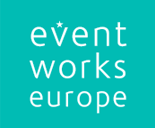How to eep audiences engaged on virtual events using ‘gamification’.
One of the most common challenges with virtual events is achieving audience engagement throughout the whole event. As a minimum, you need a varied programme with outstanding speakers and content, and a carefully considered format, duration and timing.
But there is more you can do achieve optimum engagement and frankly, to avoid a virtual event becoming dry and boring.
Introducing gamification
Gamification is the process of adding game-like elements to a non-game environment or experience (eg an event) in order to increase the overall value for participants.
This can include competitions, point systems, rewards & prizes, and problem solving or quizzes. An ideal outcome is that participants experience a reward, feel engaged, and consequently return, or continue, to participate in the game – and stay engaged in your event.
The real point of event gamification is about driving behaviours to help achieve your event outcomes. This could be to drive traffic to your sponsors, gain feedback on a new product or service offering, share a new piece of information, for example.
Deciding what will work for your event is based not only on your event aims, but also on what you know about your audience and their behaviours. For example, do they book early or late, do they pay for themselves or invoice to the company, are they tech-savvy or resistant, do they engage on social media, which networks? With the knowledge you have you can create a game experience that really resonates and achieves the engagement you are looking for.
Some examples of gamification
There are lots of options to choose from, here are a few examples.
A virtual scavenger hunt: This aims to guide your attendees into all your virtual event areas to find hidden items which can take many forms, such as:
- Schedule a 1:1 meeting with an exhibitor (Provide the name of the exhibitor, company, and a screenshot of the calendar appointment).
- Identify the keyword mentioned in the opening Keynote.
- List all of the event sponsors.
- Attend three breakout sessions (identify the names, and we will confirm your attendance post-event).
Your rules need to state which, and how many items the attendee need to collect, in what time frame and how do they submit the results and when – keep it simple and communicate the rules in advance.
Trivia and puzzles: Some people love to demonstrate their knowledge and problem-solving skills. Event attendees answer a series of questions throughout your event to help them retain important information. The questions can be related to presentation content or vendor products. Participants can earn points for each question they answer.
Social Sharing: Gamifying social media activity by encouraging participants to share their event experience on social media in order to unlock prizes – or, you can raise money for a charitable cause by committing to donate a certain amount when social posts from participants reach a designated target.
Photo Contests: Participants can upload photos onto one of your social media channels using a hashtag, or onto your event app if you have one, and vote on their favourite submissions. Alternatively, you could post an event-related photo and ask for the best caption!
Bingo: This is a simple and effective way to improve networking and vendor interaction for your event. Attendees would receive an electronic bingo card populated with information based on your preferences – participants can earn bonus points once they’ve completed a horizontal row, vertical column, diagonal row or the complete board.
Polls: These can provide valuable information which can be shared with sponsors, speakers etc. Encourage people to take the polls by rewarding points for each one taken. The more polls, the more points, and at the end of the event, the most points wins.
Some good practice guidelines to introducing your game.
1) Launch and communicate about your game in all pre-event communication and marketing
Your game is an important feature of your virtual event so ensure that you are weaving the message throughout all of your pre-event comms. It’s possible that you could even launch your game pre-event to build hype, awareness and early engagement. Don’t leave it as an after-thought.
2) Keep the game rules and prize giveaways clear and simple.
You’re trying to build engagement, so make sure that the audience know when and how to participate in the game and to claim their prizes! Prizes such as Uber-eats or Amazon vouchers are ideal as they can be sent instantaneously by email.
3) Use the tools and technology that meet your needs.
There are lots of tools and solutions to use, just be sure that the technology doesn’t distract from the game – the technology should be powering the game to achieve maximum engagement with the participants. You can use your event App, or make use of social media channels which your delegates engage with, for example – choose a solution which will work with your audience based on what you know about them.
Hopefully this has given you some food for thought!
If you need help with your virtual event, get in touch and we can help you with some ideas and inspiration, and help you to put this all into practice.

